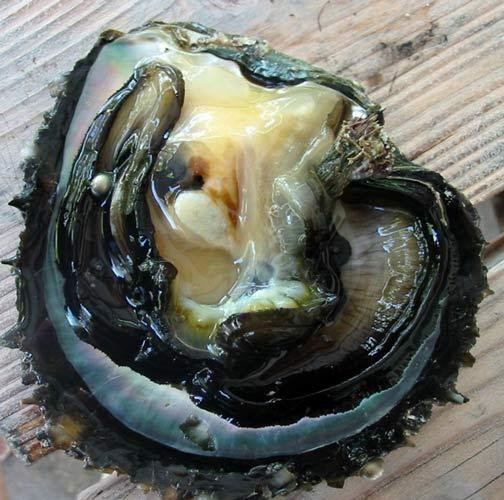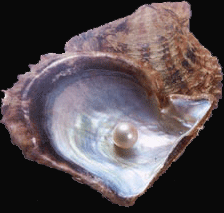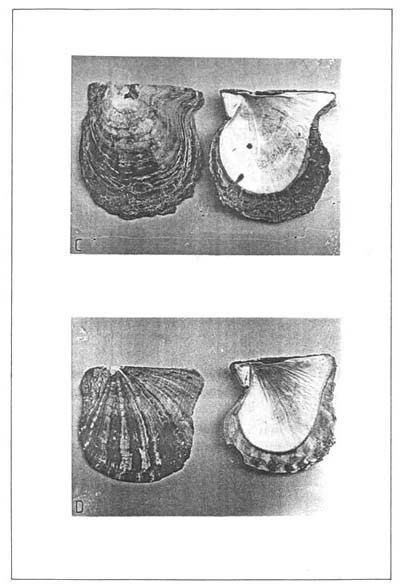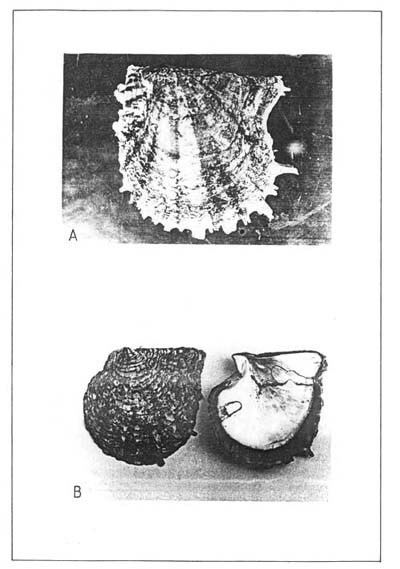Order Pterioida Higher classification Pinctada | Scientific name Pinctada fucata | |
 | ||
Similar Pinctada margaritifera, Pinctada, Pinctada maxima, Molluscs, Bivalvia | ||
pinctada fucata martensii japanese pearl oyster
Pinctada fucata, the Akoya pearl oyster, is a species of marine bivalve mollusk in the family Pteriidae, the pearl oysters. Some authorities classify this oyster as Pinctada imbricata fucata (Gould, 1850). It is native to shallow waters in the Indo-Pacific region and is used in the culture of pearls.
Contents
- pinctada fucata martensii japanese pearl oyster
- Description
- Distribution
- Biology
- Pearl culture
- References

Description

Pinctada fucata has two valves connected by a long straight hinge. The length of the shell is slightly greater than its width, and the latter is about 85% of the length of the hinge. The right valve is flatter than the left and there are hinge teeth in both valves. The anterior ear is larger than that in other members of the genus and there is a slit-like notch for the byssus threads to pass through at the junction of the ear and the rest of the shell. The posterior ear is large. The outer surface of the valves is scaly and reddish or golden brown with pale radiating streaks. The inner surface of the valve is lined with a thick layer of golden-yellow nacre with a metallic sheen.
Distribution

Pinctada fucata is native to the Indo-Pacific region. Its range includes the Red Sea, the Persian Gulf, and coastal waters of India, China, Korea, Japan, and the Western Pacific Ocean. It has been introduced in coastal waters of Venezuela
Biology

Like other bivalve molluscs, Pinctada fucata is a filter feeder. Water enters the shell through an opening in the mantle, passes over the gills where food particles are filtered out and gas exchange takes place, and passes out through another opening. These pearl oysters feed on infusorians, foraminifers, radiolarians and other small planktonic organisms.

The sexes are separate in Pinctada fucata and gametes are released into the sea where fertilisation takes place. In India, spawning peaks from June to September and again in November and December, during the monsoon periods. The developing larvae pass through a veliger stage and after about twenty-four days settle on the seabed and become juvenile oysters known as spat.
Pearl culture

Japan and Australia are the largest producers of cultured pearls. The process takes place within the tissues of living oysters, the species Pinctada fucata and Pteria penguin being mainly used for this purpose in Japan and Pinctada maxima in Australia. The oyster spat is grown in mesh baskets immersed in the sea for two or three years until large enough to seed. Then a tiny mother-of-pearl bead is inserted into the shell and layers of nacre become deposited around this. The oysters are kept in wire nets suspended from rafts while both oysters and pearls grow. Readiness for harvest is often determined by x-ray. Not only is the pearl gathered, but the nacre lining the inside of the valves of the shell is used in jewellery and in the manufacture of ornamental objects.
